1943 Dated - Vultee A-35 Vengeance Aircraft Weight and Balance Report
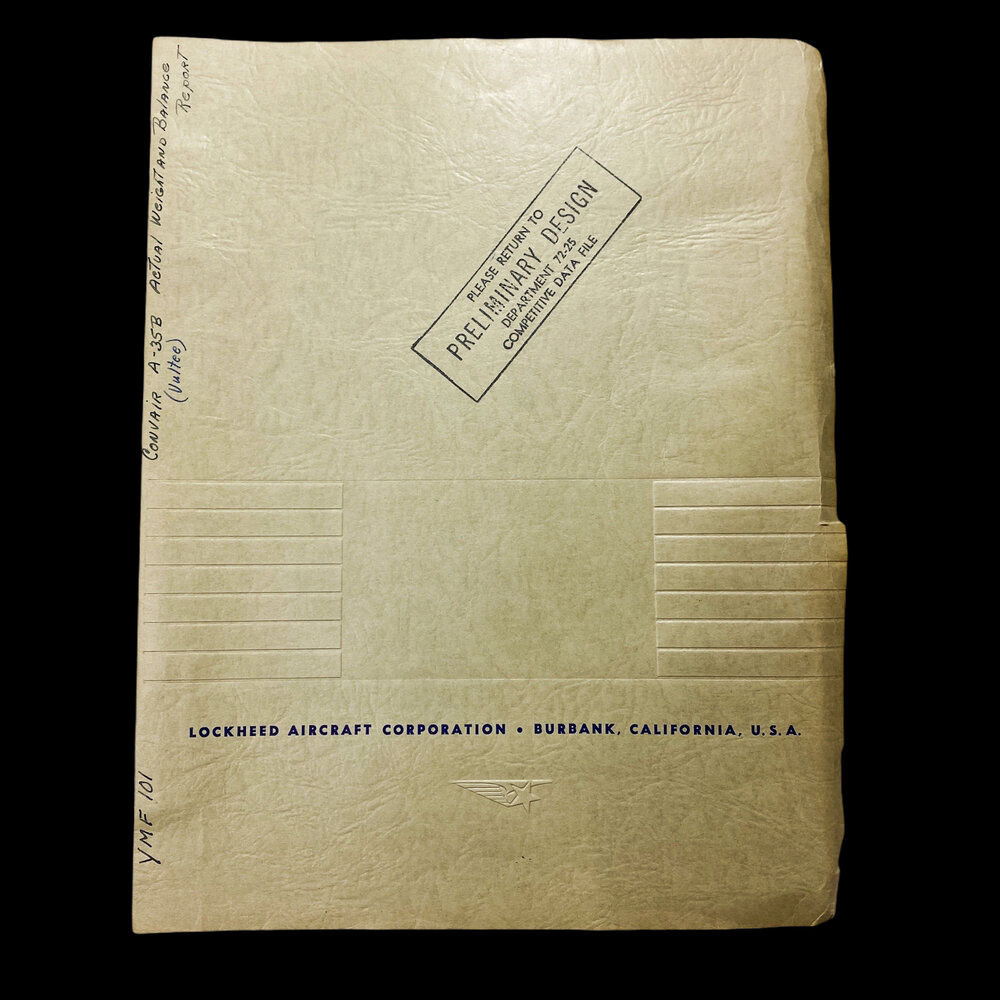
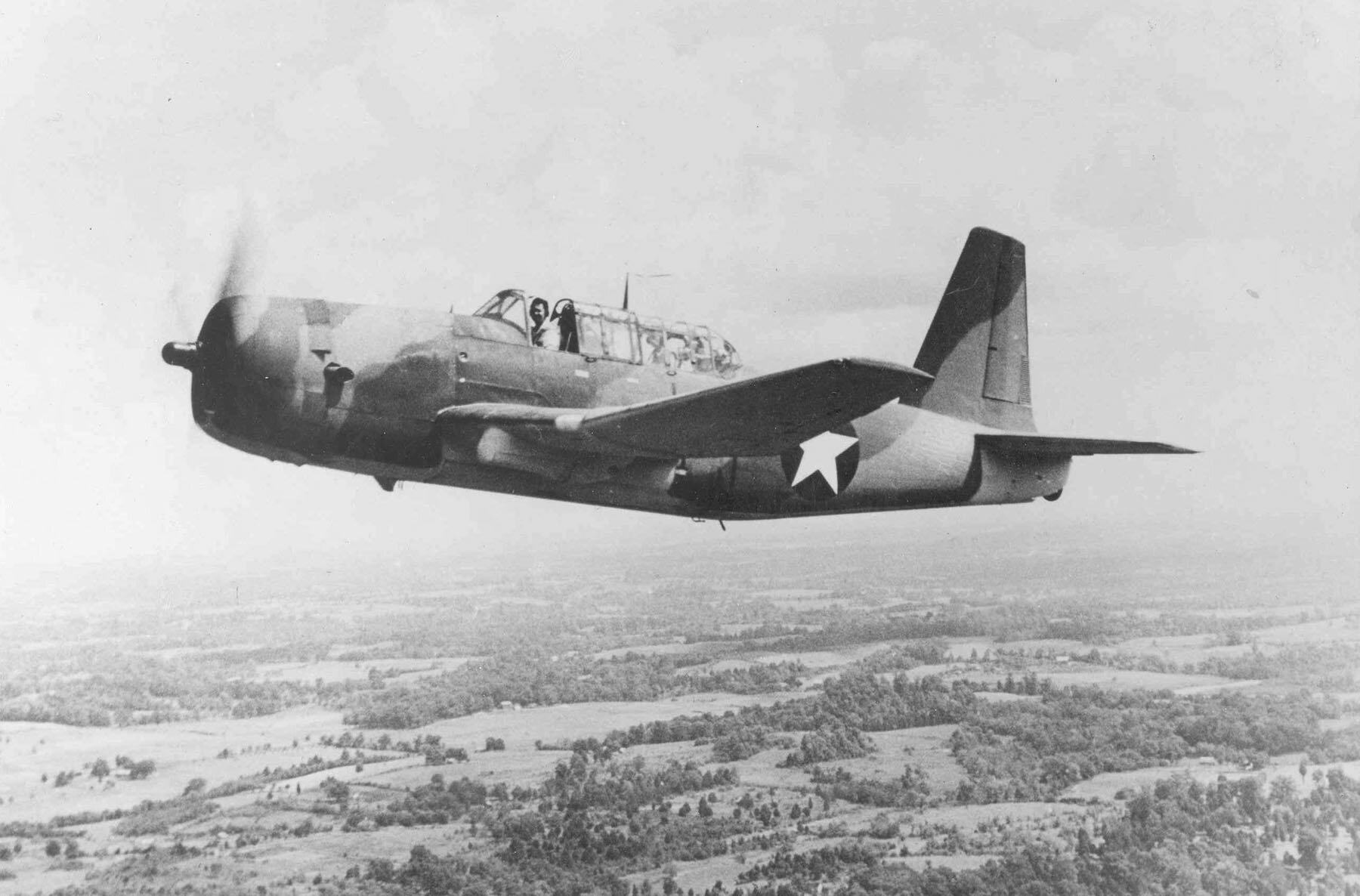
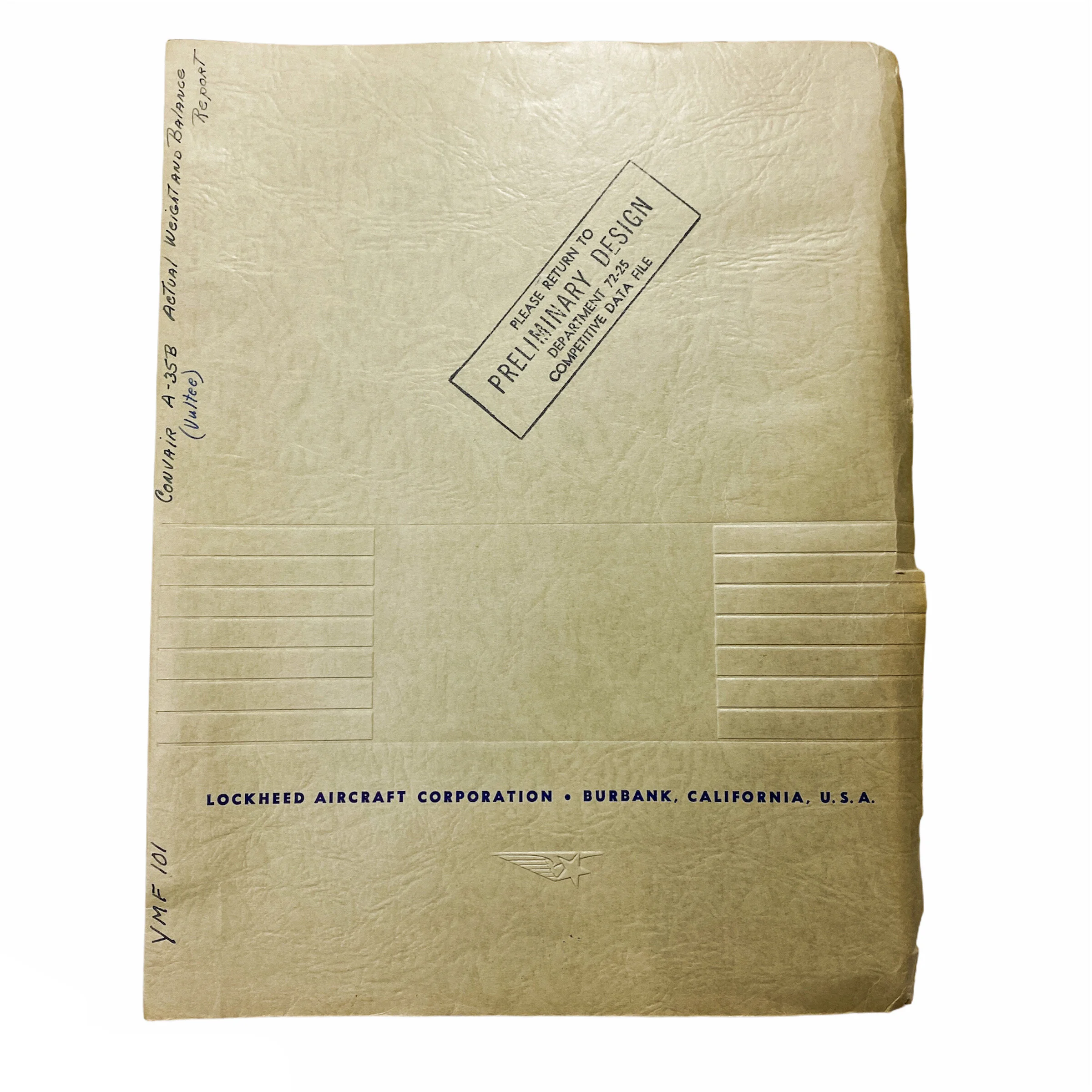



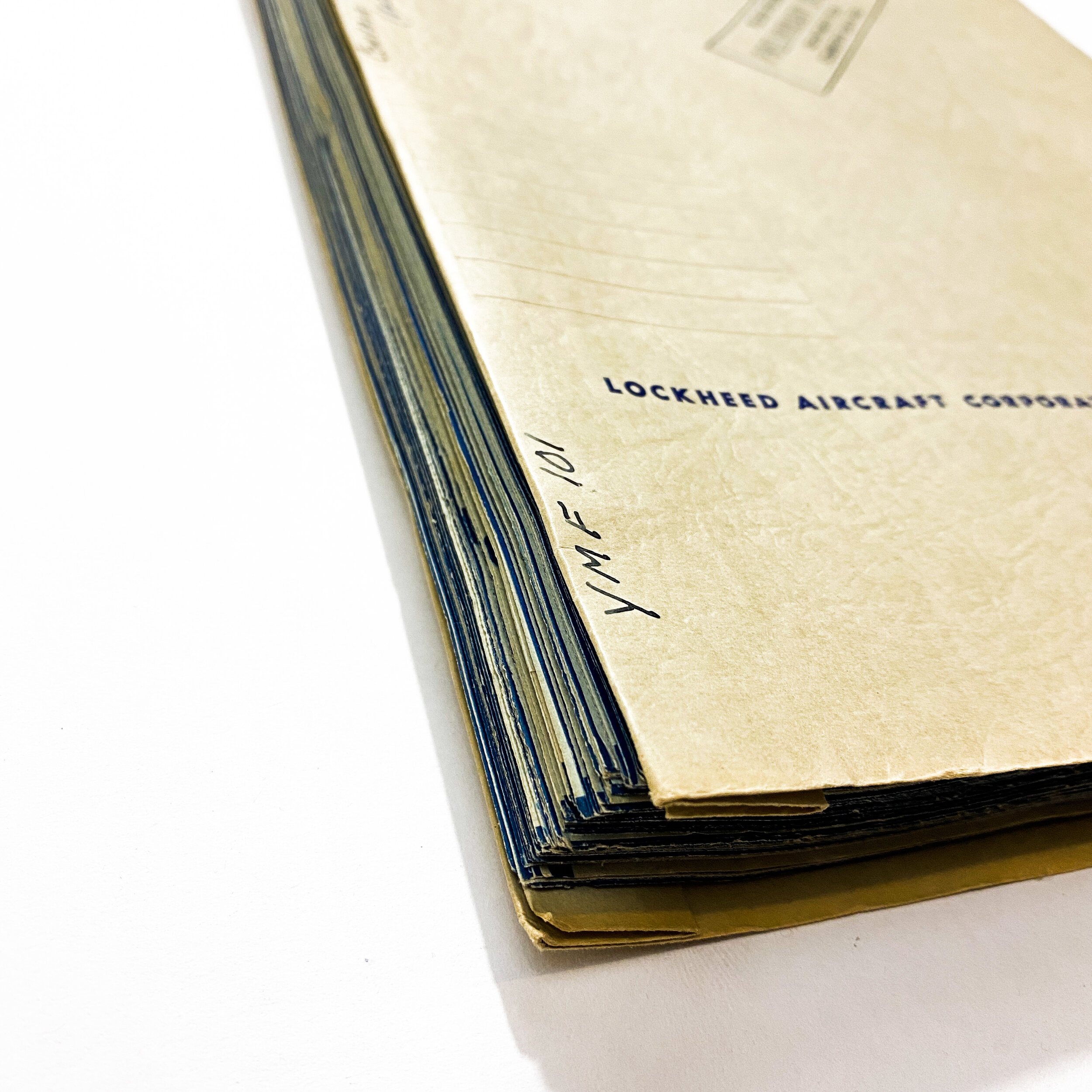

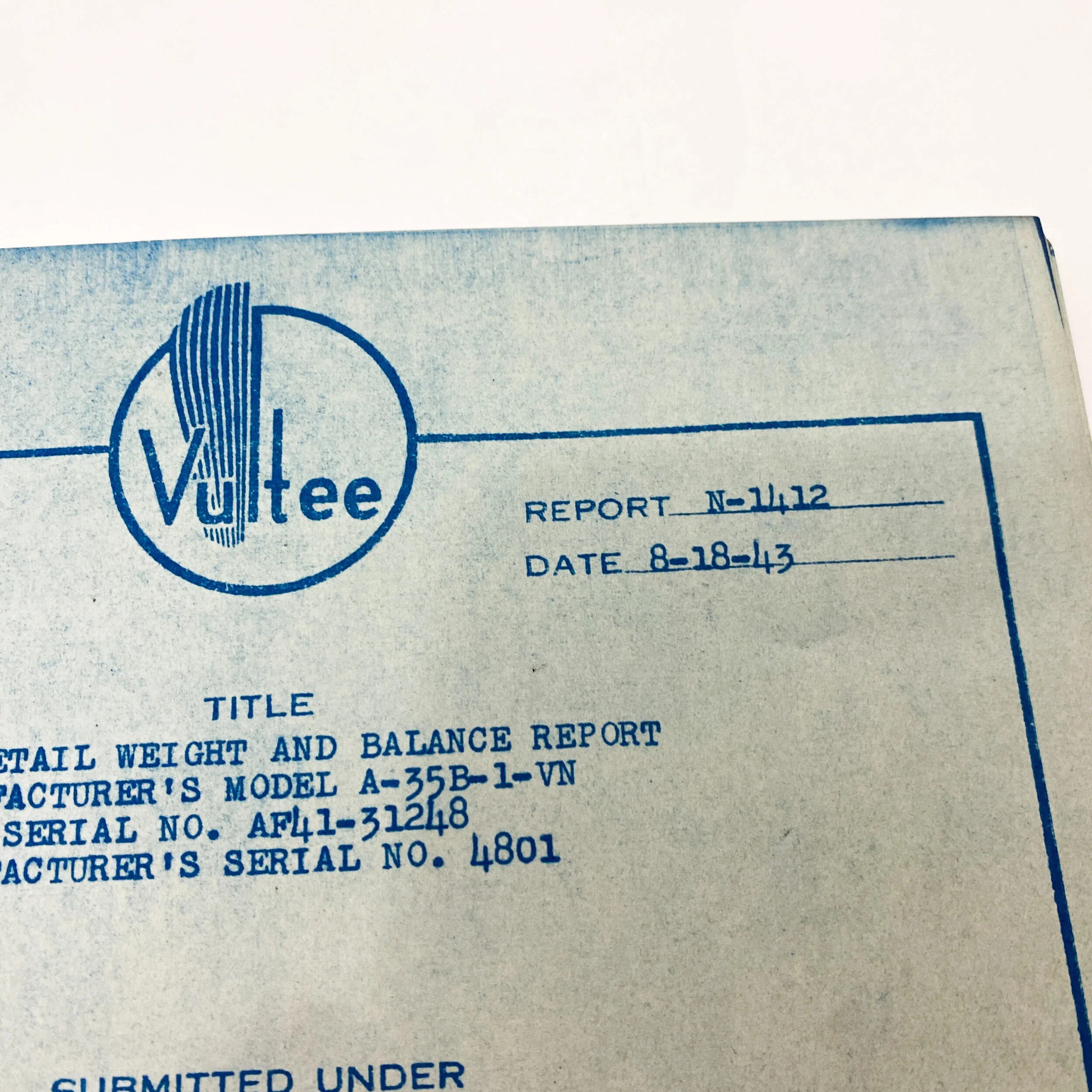


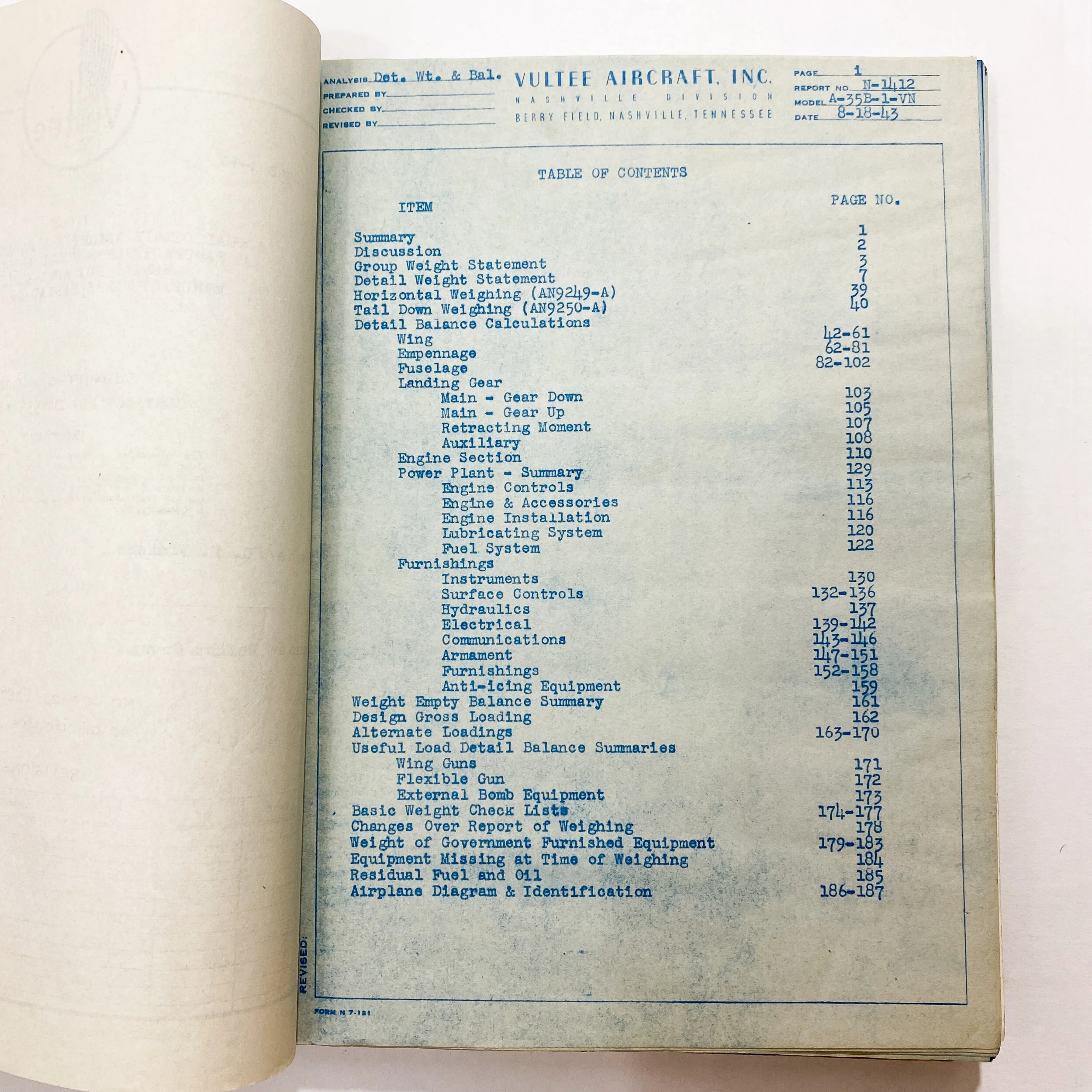

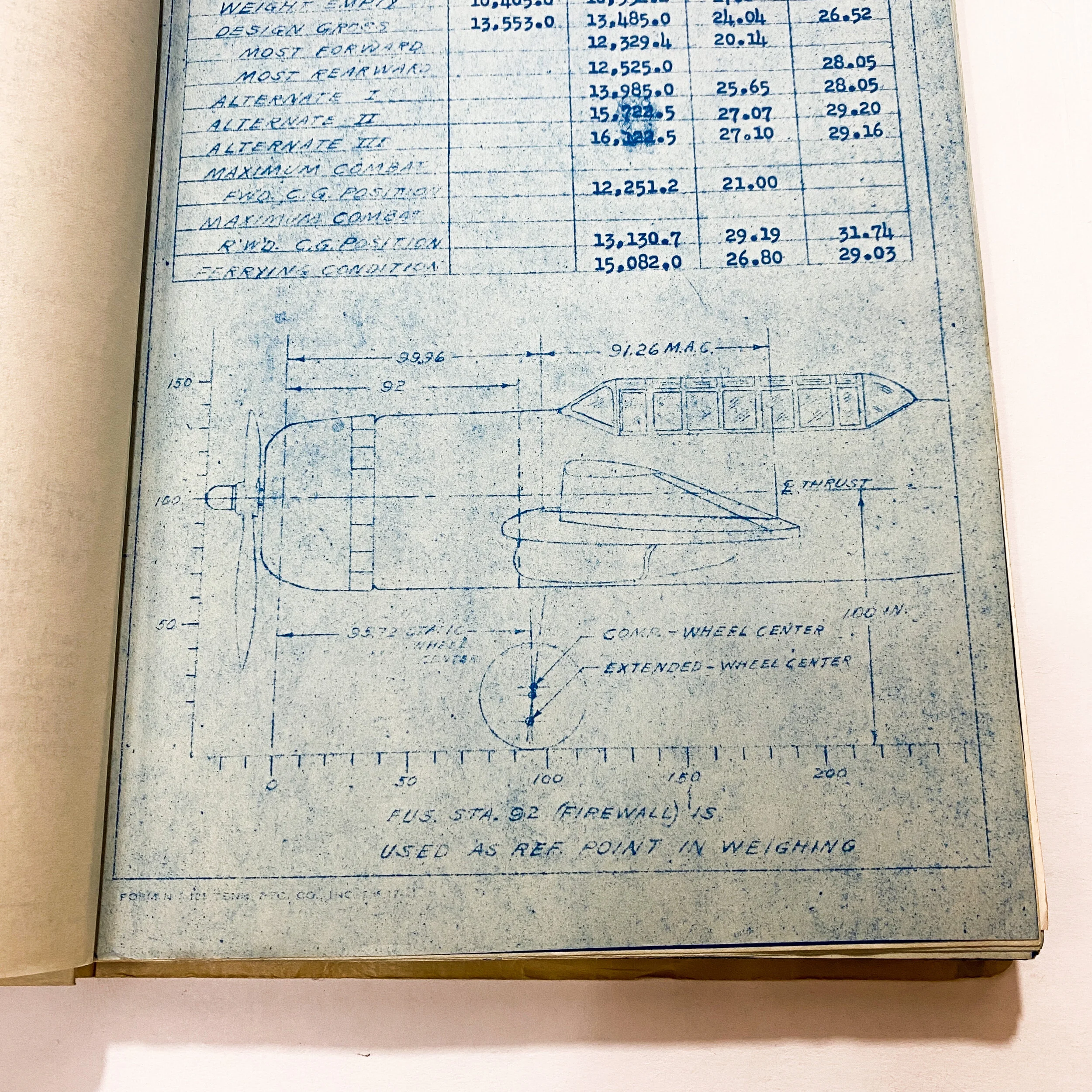




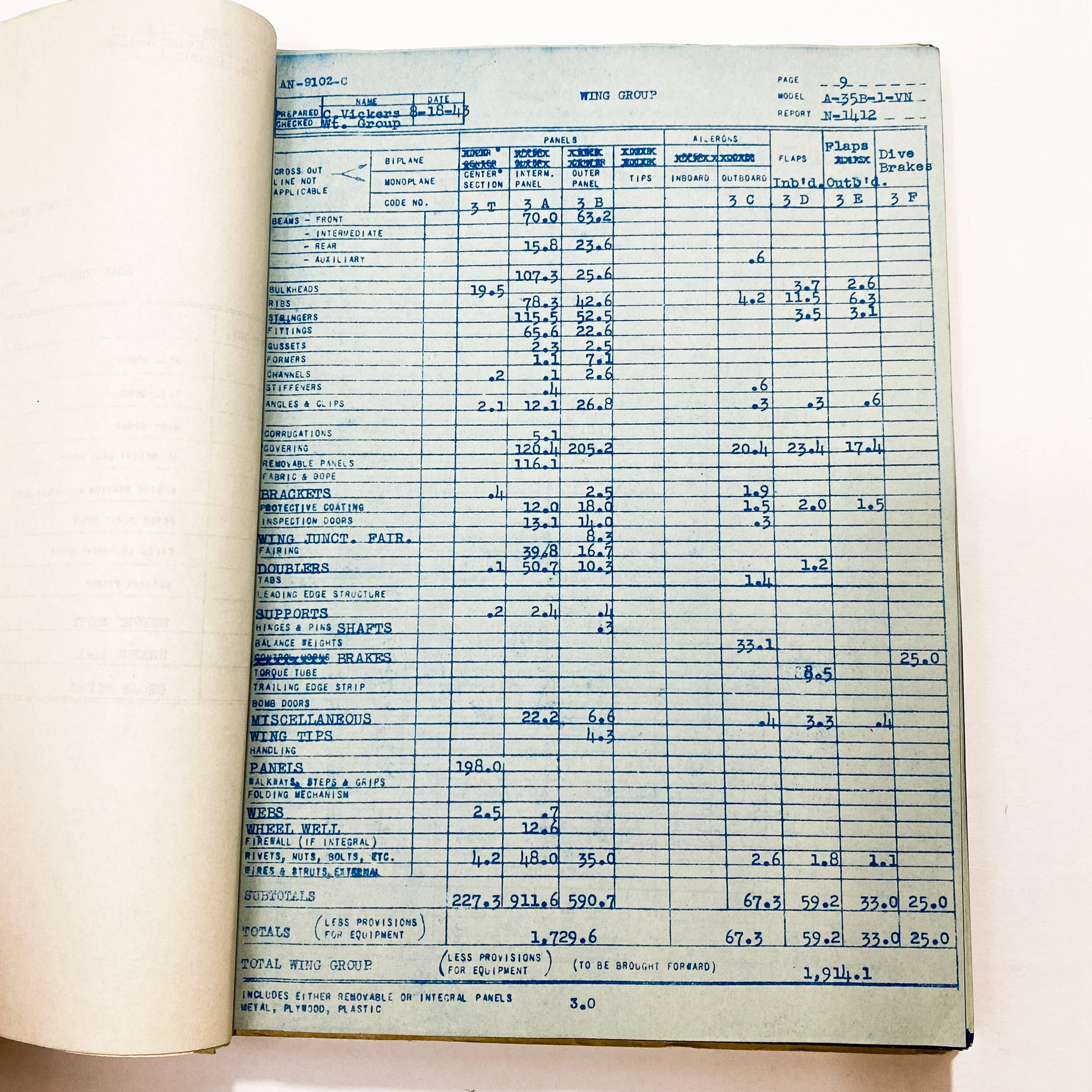

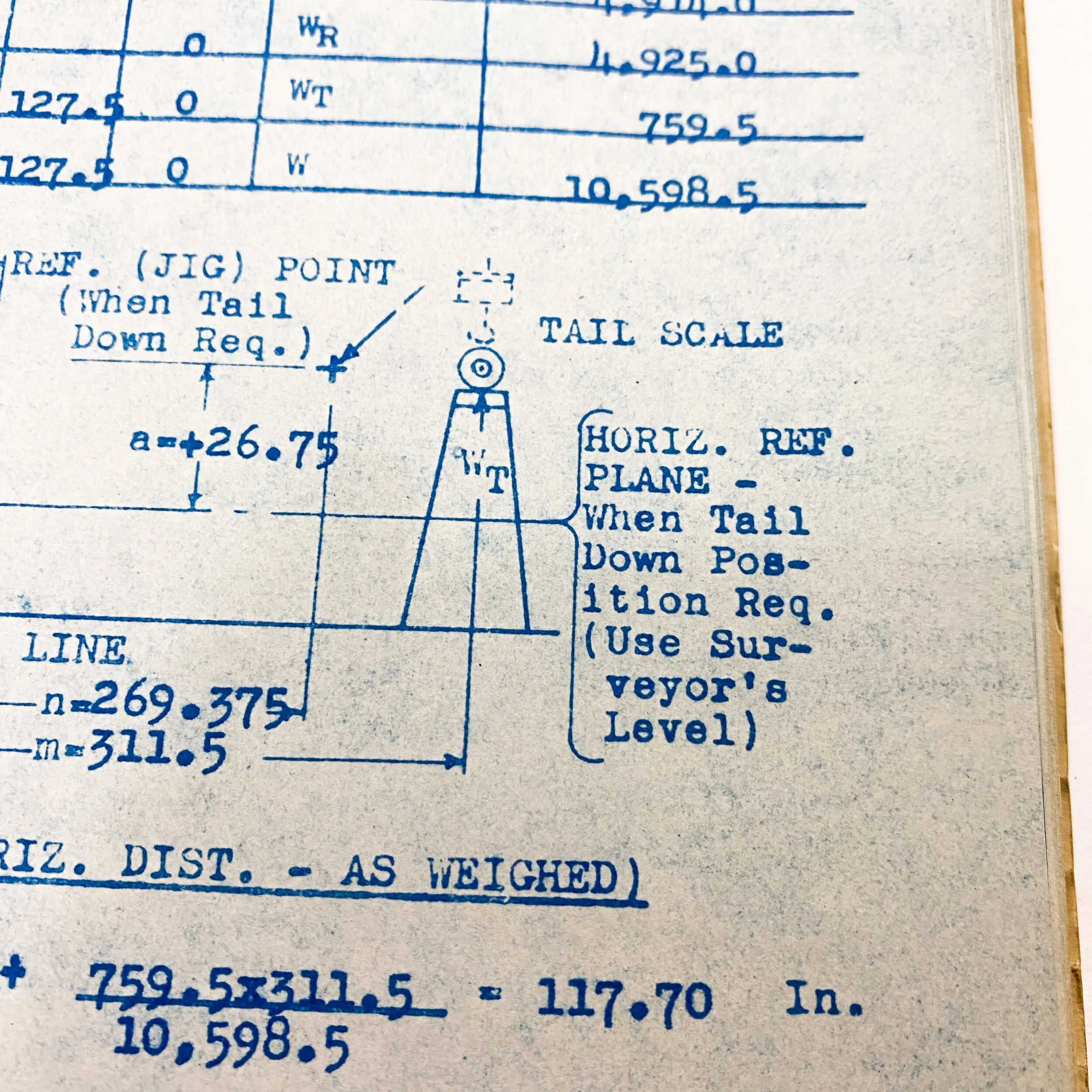


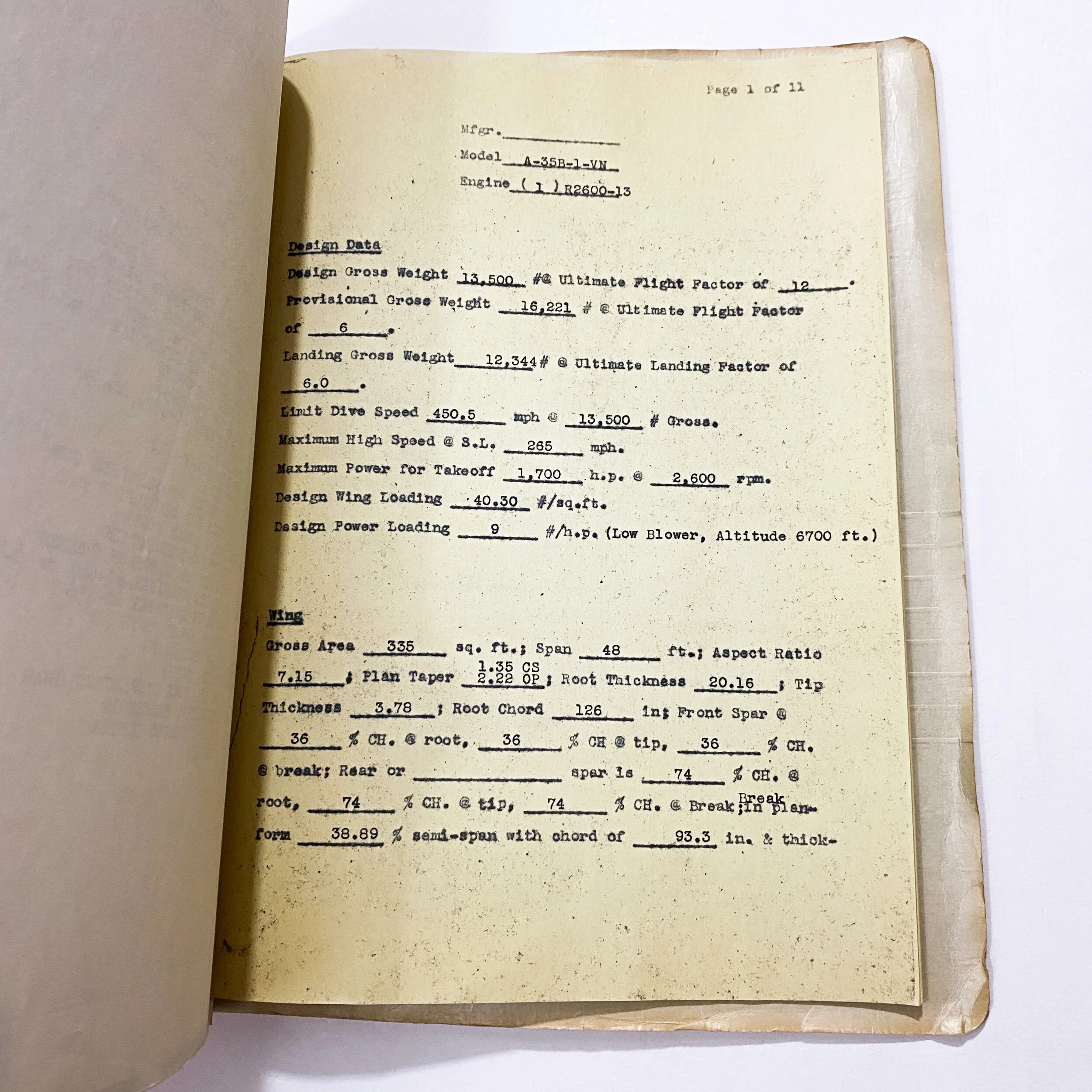
1943 Dated - Vultee A-35 Vengeance Aircraft Weight and Balance Report
Size: 9 x 11.5 inches
The Vultee A-35 Vengeance aircraft was a dive bomber produced by the Vultee Aircraft Company and resulted in over a thousand examples being used by foreign forces under the Lend-Lease Act. Originally ordered for French use as the V-72, some 300 examples arrived before the fall of France. Subsequent examples were sent to Britain where they were utilized in some limited operational roles (in Burma) but were mostly relegated to target towing tugs for the Royal Air Force in Europe. This light combat use mostly came from the under-performing specifications that followed the aircraft, quite the underdog when taken up against its contemporaries. Additional users included Free French forces operating in North Africa, the Indian Air Force, and the Royal Australian Air Force.
This original early war spec report of the Vultee A-35 Vengeance Aircraft is dated August 18th of 1943. This binder details report ‘N-1412’ and contains extremely detailed specs of the weight and balance report of this aircraft. This 187 page report was prepared by C. B. Vickers before being checked by the Weight Group and was submitted under contract number ‘DAW535’ and ‘AC-119’. Not only does this report contain crucial information on the design of this aircraft, but it also contains two classified diagrams of the aircraft itself.
The A-35 appeared very much the fundamental aircraft with a low-set monoplane wing and a single vertical tail surface. The fuselage was long, fitting in a Wright-powered R-2600 14-cylinder radial engine capable of 1,700 horsepower (A-35B). A battery of 6 x 12.7mm (.50 caliber) machine guns were mounted in the leading edges of the wings, three to a wing and a single 12.7mm machine was positioned in a flexible mount rear cockpit position. The pilot sat in a glazed covered canopy area with the rear gunner in tandem. In the dive-bombing role, the system could take on some 2,000lb of bombs.
At its core, the A-35 was a further design of the preceding A-31 platform, developed at a time when the German Ju 87 Stuka (detailed elsewhere on this site) showed the world just how devastating dive bombers could be. Vultee produced about 99 A-35A models for the US Army and were followed by the improved A-35B model series at the 100th example and beyond. The A-35B came about due to the requirements of the Army for Vultee to fix several combat deficiencies in their initial production model. Changes and fixes included the expansion of the 4 x 12.7mm machine gun array in the wings to 6 x 12.7mm machine guns, a redesigned tail surface, and modifications to the fuel system. Self-sealing fuel tanks were also implemented for added security, a practice now the norm at the height of World War 2.